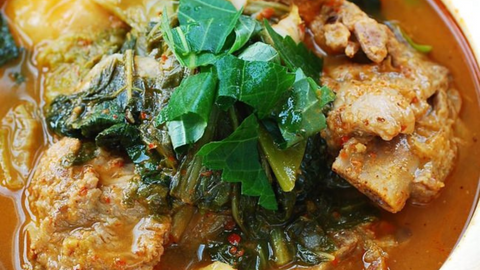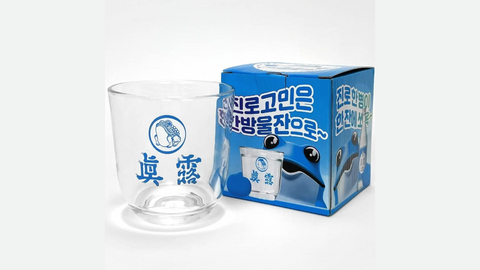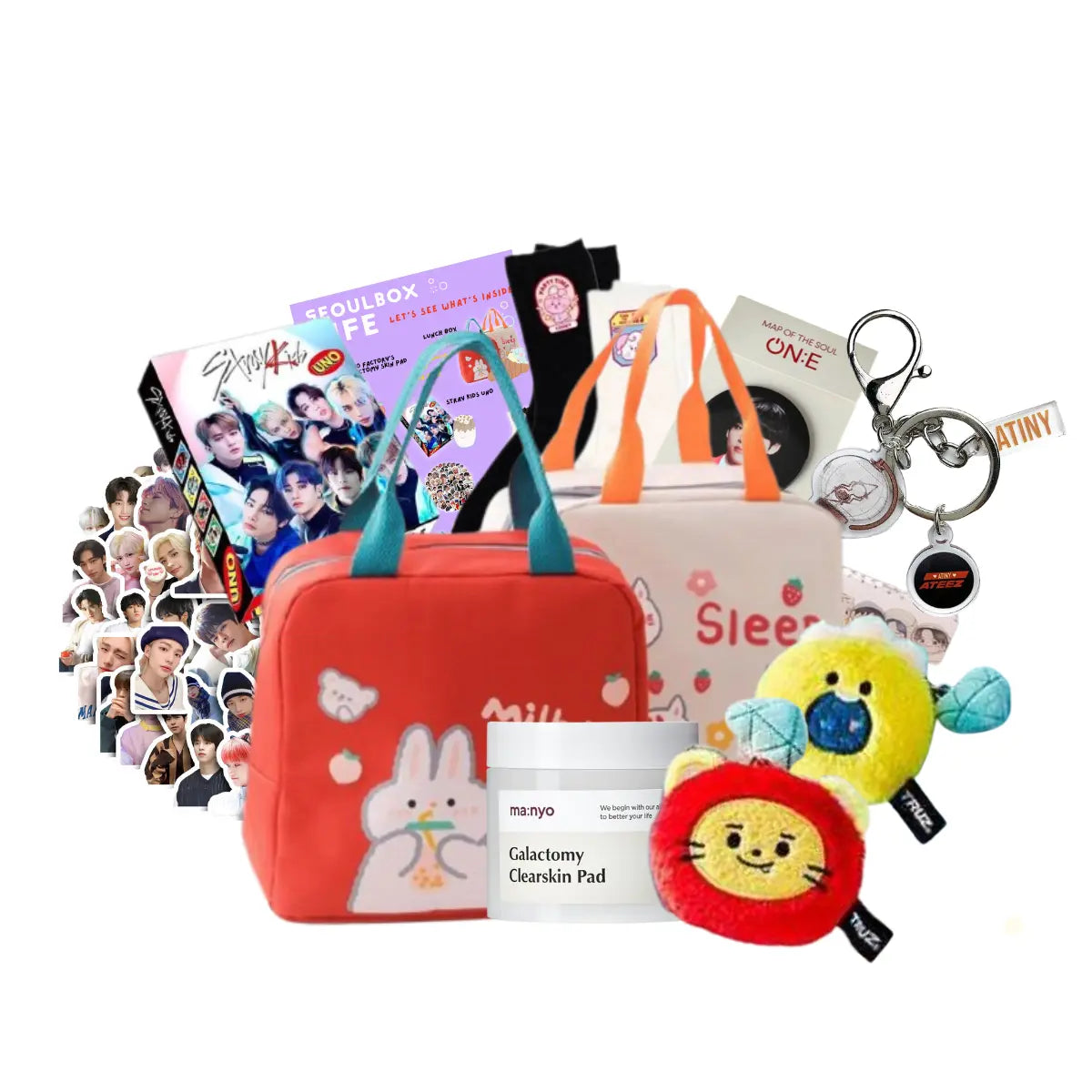FAMOUS KOREAN ALCOHOL: SOJU
Importance of Soju in Korean Culture
There is a very specific way in which South Korea has its traditions, lifestyle and social structure established, as well as a drinking culture so important on their day-to-day life, helping foster the development of relationships between friends and family. Traditional family rituals, such as honoring ancestors, frequently involve drinking and alcohol usage has modernized and expanded beyond traditional holiday and family ritual drinking to play a significant role in Korean society.
 (Image: Credits to the rightful owner)
(Image: Credits to the rightful owner)
To honor ancestors and to spread cheer to friends and neighbors on special occasions, South Koreans have a long practice of drinking alcohol. Known as the "National Drink," soju is the most popular alcoholic beverage in South Korea. Its history dates back to the country's earliest civilizations, and thanks to its distinctive green bottle packaging, you've probably seen it on K-dramas, pictures or online or on the shelves of specialized convenience stores in your country.
Soju was introduced to Korea by Mongol invaders in the early 13th century during the Goryeo Dynasty, first produced in Arabia under the name "araq" and went through the Mongols before reaching the country. History sources claim that Genghis Khan introduced the Arabian araq to Mongolia before sending it to Korea through his grandson Kublai Khan, the first emperor of the Yuan Dynasty.
Types of Soju
Old Style
Andong Soju: is a traditional type of distilled soju produced in Andong, North Gyeongsang Province. The introduction of soju to Andong during the 13th century coincides with the expansion of the Yuan Dynasty onto the Korean Peninsula. Andong served as the Yuan Dynasty's supply base, which was built in anticipation of an expedition to Japan.
 (Image: Credits to the rightful owner)
(Image: Credits to the rightful owner)
Gamhongro: Gamhongro is regarded as one of the top three traditional liquor. It is created by distilling rice-based liquor and adding soaked Korean medicinal herbs.
 (Image: Credits to the rightful owner)
(Image: Credits to the rightful owner)
Igangju: is one of the three major liquors of the Joseon Dynasty, and it was called Lee Gang -ju because traditional soju contains pear and ginger.
 (Image: Credits to the rightful owner)
(Image: Credits to the rightful owner)
Jindo Hongju: One of Korea's traditional alcoholic beverages acquires a vivid red hue that comes naturally from Jicho roots and is distinctive among distilled goods. The South Jeolla province's Jindo Island is the only place where the traditional booze in the color of red is made.
 (Image: Credits to the rightful owner)
(Image: Credits to the rightful owner)
Modern Style
Since the late 1990s, the soju's alcoholic content has been declining, following a global trend toward spirits with lower alcoholic contents that is being driven by a culture that is becoming more and more health-conscious making hard to compare to traditional distilled Soju which contains a higher level of alcohol.
- Bohae Soju: Honey Soju
- Bohae Soju: Raspberry
- Chateul Soorok: Americano
- Chateul Soorok: Ginger
- Chateul Soorok: Lychee
- Good Day: Red (Pomegranate)
 (Image: Credits to the rightful owner)
(Image: Credits to the rightful owner)
Food to Pair with Soju (Anju)
Soju is a representation of solidarity since in South Korea, drinking by oneself is uncommon, so when you drink, you join in on the group's sharing and help to maintain social harmony, all of which are aspects of the country's drinking culture.
Maeuntang: is a fiery Korean stew made with tofu, veggies, and fresh fish. Using a fresh, entire fish when cooking results in a thick, velvety soup with a light seafood flavor.
 (Image: Credits to the rightful owner)
(Image: Credits to the rightful owner)
Bossam: Pork shoulder that has been thinly sliced and cooked with spices typically makes up this dish. In addition to ssamjang (wrap sauce), saeu-jeot (salted shrimp), kimchi, and ssam (wrap) vegetables such lettuce, kkaennip (perilla leaves), and inner leaves of a napa cabbage.
 (Image: Credits to the rightful owner)
(Image: Credits to the rightful owner)
Dubu Kimchi: is a well-known Korean meal that consists of tofu with stir-fried kimchi. Sliced pork is frequently served with fried or just sliced tofu, kimchi, and other vegetables.
 (Image: Credits to the rightful owner)
(Image: Credits to the rightful owner)
Gamjatang: a spicy Korean soup made from pork bones made by long-term boiling pork bones, then straining the milky bone broth and seasoning it with unique Korean condiments such gochugaru (Korean chili flakes) and gochujang (Korean chili paste).
 (Image: Credits to the rightful owner)
(Image: Credits to the rightful owner)
Jokbal: consists of braising pig's trotters in seasonings for hours until they completely absorb the flavors and are soft, glossy, and glazed, with the meat sliding off the bone.
 (Image: Credits to the rightful owner)
(Image: Credits to the rightful owner)
Samgyeopsal: Samgyeopsal, or "three-layer meat," refers to the fat cap of the pig belly as well as the two leaners, light and dark, layers of meat beneath it.
 (Image: Credits to the rightful owner)
(Image: Credits to the rightful owner)
When and Which Festival Koreans drink Soju
Korean New Year
 (Image: Credits to the rightful owner)
(Image: Credits to the rightful owner)
To ward off illness and evil spirits at the start of each year, Korean forefathers drank soju, which is also known as spring. Dosoju is a type of Soju that is produced using refined rice wine and medicinal herbs and used by adults and kids alike as a form of medicine when they were ill. Because Korean forefathers valued alcohol so highly, they went to considerable lengths to pass down their drinking traditions from generation to generation
Daeboreum
 (Image: Credits to the rightful owner)
(Image: Credits to the rightful owner)
Traditional South Korean holidays are observed on the 15th day of the New Year in accordance with the lunar calendar. For the first full moon of the year, lots of people go to moon viewing activities across the nation and drink Daeboreium, also known as "ear-quickening wine," on that night with the hopes of receiving good news fast for the upcoming year.
In order to prevent disease and vaporization, youngsters are advised to put their lips to the wine glass rather than really drinking it.
Dano
 (Image: Credits to the rightful owner)
(Image: Credits to the rightful owner)
Chuseok, also known as hangawi, is a harvest festival celebrated in Korea on the lunar calendar's August 15th full moon. In addition to other East Asian countries, there are celebrations for the full moon or mid-autumn in China, Japan, Singapore, Malaysia, and Vietnam. Families in Korea visit their ancestral hometowns over the three-day holiday or gather at the home of the family head to feast after the yearly charye and seongmyo, the memorial service for one's ancestors and family visits to ancestors' graves
Chuseok
 (Image: Credits to the rightful owner)
(Image: Credits to the rightful owner)
The harvest festival of Chuseok, also known as hangawi, is observed in Korea on the full moon of August 15th of the lunar calendar. There are celebrations for the full moon or mid-autumn in nations including China, Japan, Singapore, Malaysia, and Vietnam, as well as throughout East Asia.
After the yearly charye and seongmyo, the memorial service for one's ancestors and family visits to ancestors' graves, families in Korea visit their ancestral hometowns during the three-day holiday or come together at the home of the family head to have a feast and drinks.
How Soju can Build a Relationship (Hoesik)
Hweshik, also known as hoesik, is a practice of eating and drinking with bosses and coworkers that is typically done after leaving the office, it is typically used with clients as well as coworkers to discuss business-related issues. When speaking in hoesik, soju or any other form of alcoholic beverage must be present as a "friend."
 (Image: Credits to the rightful owner)
(Image: Credits to the rightful owner)
Hoesik's goals include enhancing bonds and getting to know coworkers better. Additionally, this activity frequently serves as a chance to network with and establish contacts with company executives.
A little surprise to all our Seoulmates…
As you might figure it out by now, K-dramas wouldn’t be complete without a Soju scene, more precisely Jinro’s Soju bottles, and let’s not lie ourselves, these scenes have waken up our curiosity to try Soju with our friends and family while we enjoy our favorite K-drama. Soju sequences frequently mark the points at which the main characters fully develops or we as spectators get to love a specific character making these soju moments familiar to spectators, they have made these dramas memorable.
 (Image: Credits to the rightful owner)
(Image: Credits to the rightful owner)
To create fun and unique memories with your family and friends we at Seoulbox have the perfect glass to drink soju from, Jinro’s Soju shot glass, shot glasses are so closely associated with soju in Korea that they go by the name soju-jan, which translates to "soju glass"!
 (Image: Credits to the rightful owner)
(Image: Credits to the rightful owner)
"Enjoy Soju in the OST Korean style, recreating your favorite drinking scene with our soju glass only from Seoulbox”
Learn more about this box here
AUTHOR: SUJI SOHN
About the author: Suji was studying in London in the year 2019 and, although being separated from her family, her passion for Korea was growing. She noticed that a lot of her close friends loved Korean culture, food, music, and dramas and gradually started to fall in love with Korea, but there weren't many opportunities to actually "experience" this wonderful nation!
Suji was aware of what she needed to do to introduce Korea to her friends' lives and, conceivably, to those of everyone else who was curious about a piece of Daehan Min-guk.





